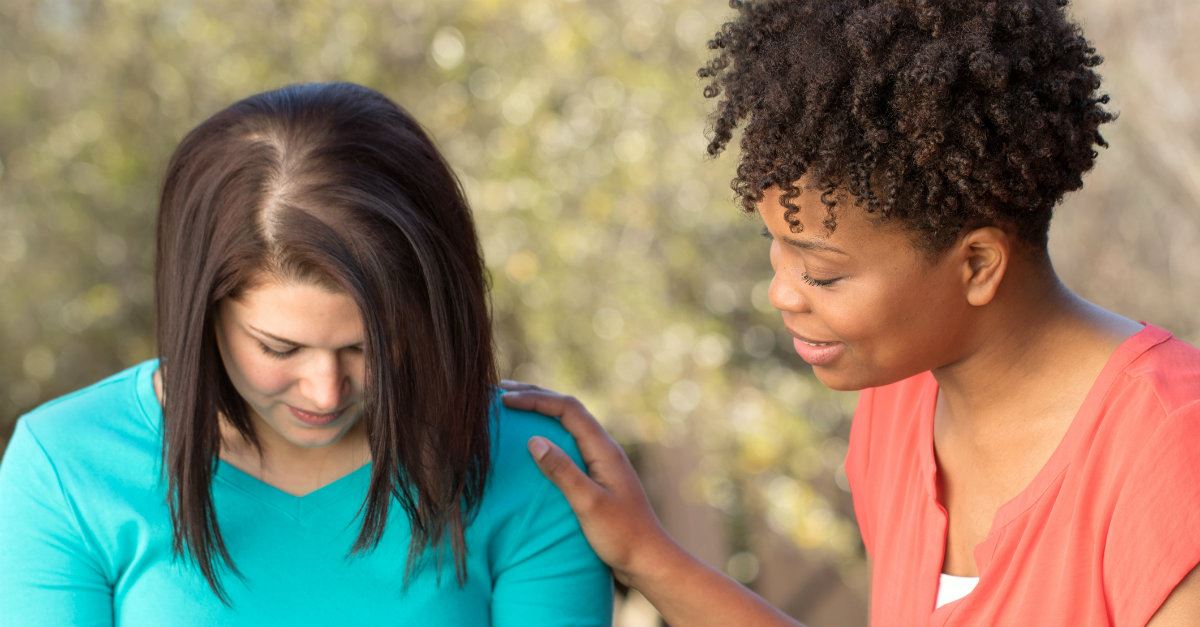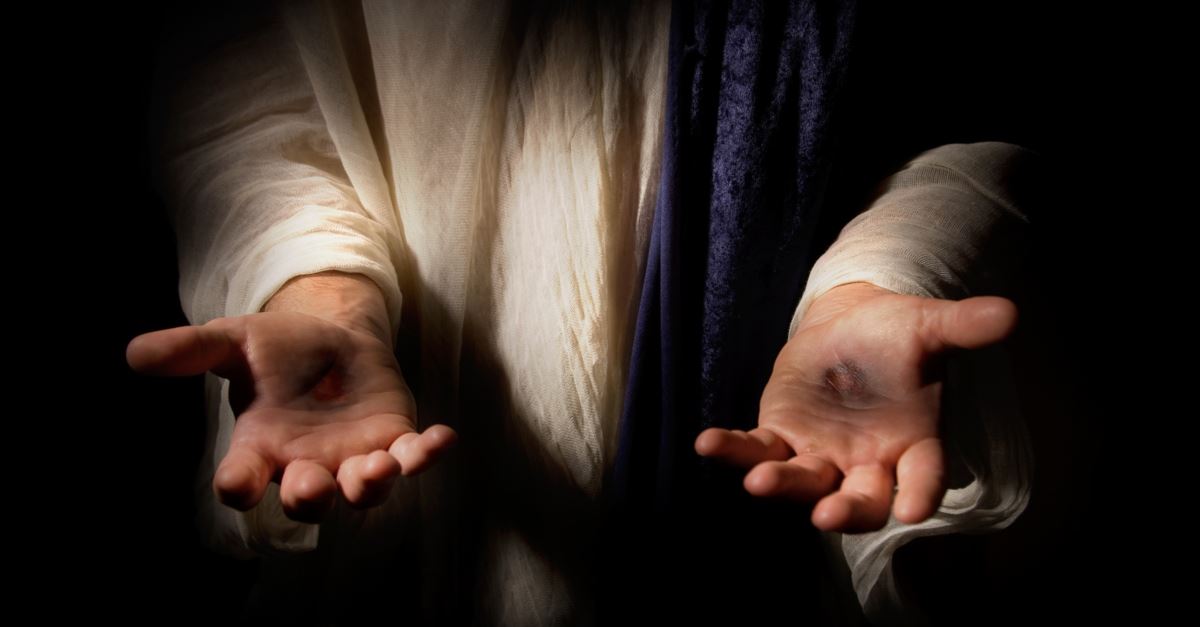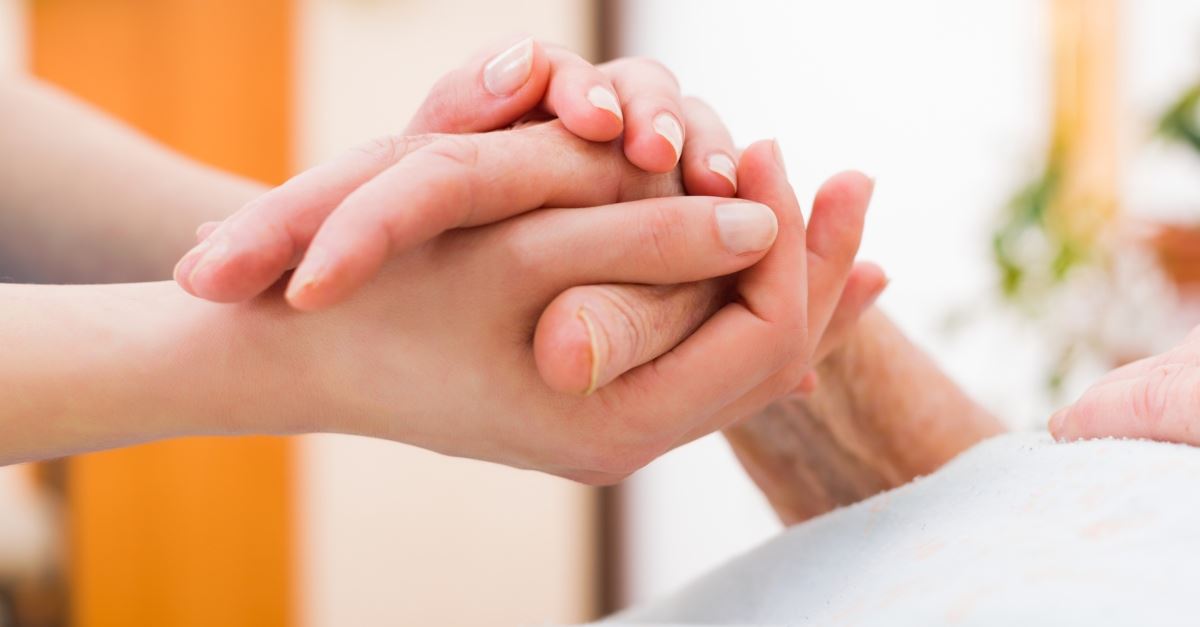What Is the Significance of "Laying Hands" on Someone in Prayer?

You've probably heard the term "laying on of hands" before in various Christian circles. It's a common phrase, but perhaps not as commonly understood. Some denominations practice it regularly, such as Pentecostalism, while others shy away from it completely. Still others warn against the concept, calling it pagan or dangerous. But according to Scripture, the laying on of hands isn’t as eerie or mystical as it might sound.
What does the “Laying on of Hands” Mean?
The laying on of hands, as seen in the Bible and used in Christian communities, is a symbolic gesture that signifies an ordination, or a setting apart. It is also used as an expression of healing and blessing, and various churches today use it in this way—for healing, for ordaining ministers, and for blessing, to name a few.
There are many places in the Bible, both in the Old and New Testament, that reference the practice of laying on of hands.

Photo Credit: Getty Images
Where Is the “Laying on of Hands” in the Bible?
1.) In Leviticus, the book of instructions for worship, we can see the practice of laying on of hands in the ritual offerings for sin:
The Lord called Moses and spoke to him from the tent of meeting, saying, “Speak to the people of Israel and say to them, When any one of you brings an offering to the Lord, you shall bring your offering of livestock from the herd or from the flock. “If his offering is a burnt offering from the herd, he shall offer a male without blemish. He shall bring it to the entrance of the tent of meeting, that he may be accepted before the Lord. He shall lay his hand on the head of the burnt offering, and it shall be accepted for him to make atonement for him.(Leviticus 1:1-4 ESV)
2.) In the book of Numbers, we see God instruct his people in this practice for the transfer of leadership.
So the Lord said to Moses, “Take Joshua the son of Nun, a man in whom is the Spirit, and lay your hand on him.”(Numbers 27:18 ESV)
3.) Another example is seen in the New ;Testament, with the ordination of leadership into the church.
Do not lay hands upon anyone too hastily and thereby share responsibility for the sins of others; keep yourself free from sin.(1 Timothy 5:22 NASB)
This does not mean that the laying on of hands signifies that you share in the person’s sin by touch alone. Rather, Paul is pointing out the danger in making a hasty decision of leadership, and clarifies that in doing so, you’re sharing responsibility for their potential negative or sinful influence. The verse continues with the admonition to keep one’s self pure.
4.)Paul references the laying on of hands in his letter to Timothy, as he spoke about the gift from God.
For this reason I remind you to kindle afresh the gift of God which is in you through the laying on of my hands.;(2 Timothy 1:6)
This signifies that Paul laid hands on Timothy when anointing him for ministry. According to Strong’s Concordance, the word “through” here means “the ground or reason by which something is done,” or “by reason of,” or “on account of,” or “therefore.” The significance of this act is that by laying hands on Timothy, Paul was, in essence, initiating Timothy into the next phase of his life. In the laying on of hands, Paul not only approved the authority he was passing on to Timothy and taking responsibility for it, but he was helping fan Timothy’s beginning spark into a burning flame of powerful ministry.

Photo Credit: Getty Images/Kevin Schreibe
The Hands of Jesus in Ministry
Throughout Jesus’ ministry on earth, the Bible shows Him laying his hands on those he ministered to.
- In Mark, He used the practice for blessing: But when Jesus saw it, he was indignant and said to them, “Let the children come to me; do not hinder them, for to such belongs the kingdom of God. Truly, I say to you, whoever does not receive the kingdom of God like a child shall not enter it.” And he took them in his arms and blessed them, laying his hands on them. (Mark 10:14-17 ESV)
- In Luke, Jesus laid his hands on others in an act of healing: At sunset, the people brought to Jesus all who had various kinds of sickness, and laying his hands oneach one, he healed them. (Luke 4:40 NIV)
- Again in the book of Luke, we see how Jesus used touch to heal:And behold, there was a woman who had had a disabling spirit for eighteen years. She was bent over and could not fully straighten herself. When Jesus saw her, he called her over and said to her,“Woman, you are freed from your disability.”And he laid his hands on her, and immediately she was made straight, and she glorified God.
Laying on of Hands and the Holy Spirit
The work of the Holy Spirit is also seen throughout the New Testament in conjunction with the laying on of hands, and the growth of the early church.
And it happened that the father of Publius was lying in bedafflic ted with recurrentfever and dysentery; and Paul went in to see;him and after he had prayed, he laid his hands on him and healed him. (Acts 28:8 ESV)
But we will devote ourselves to prayer and to the ministry of the word.”And what they said pleased the whole gathering, and they chose Stephen, a man full of faith and of the Holy Spirit, and Philip, and Prochorus, and Nicanor, and Timon, and Parmenas, and Nicolaus, a proselyte of Antioch. These they set before the apostles, and they prayed and laid their hands on them. (Acts 6:4-6 ESV)
Regarding the Holy Spirit, there are many Christians of various denominations who believe that the act of laying on of hands brings the Holy Spirit upon a new believer. This comes from Acts 6:14-17 (ESV):
Now when the apostles at Jerusalem heard that Samaria had received the word of God, they sent to them Peter and John, who came down and prayed for them that they might receive the Holy Spirit, for he had not yet fallen on any of them, but they had only been baptized in the name of the Lord Jesus. Then they laid their hands on them and they received the Holy Spirit.
This debate remains controversial between church bodies as to whether or not the Holy Spirit comes via a second baptism. Regardless of where one falls on that topic, Scripture is clear that was at least the case in this instance with Peter and John.
We also know from Scripture that Jesus (and in the same vein, the Holy Spirit) are not limited by physical action. Jesus chose to lay his hands on, to touch many of those he healed, but He also healed many times without contact, or even being in the same vicinity of the person (Matthew 8:8). Absolutely nothing restricts the power of God. The power isn’t in the method or in the touch, but rather, in the Holy Spirit alone.
The fact that touch wasn’t necessary for healing reveals a beautiful expression of the heart of God. The Creator who set the boundaries for the sea, spoke the heavens into existence and commanded life to begin with his Word, chose to offer a physical touch to His hurting, needy creation.
Jesus could have easily healed the masses with a whisper, but He chose at many times to bridge the gap between the human and divine, and embrace the opportunity to offer a comforting, tangible touch.
The Practice in the Church Today
Today, the laying on of hands is used symbolically in the church during prayer times, for healing petitions, for blessing before ministry, for encouragement, and for ordination (the transition into leadership).
For example, when individuals or families are getting ready to head out of the country on missions, they will often be called to the front of the church for prayer. The pastor will call for members to come “lay hands.” This doesn’t have a magical power but rather is a tangible way for the congregation to be involved in the blessing of the family. In the same regard, requests are often made by church leadership for the laying on of hands in a prayer for healing. The members of the church touching the sick person doesn’t guarantee a miracle, but it’s a symbolic gesture of faith in the Lord to bring healing. On a more practical level, the simple act of touching brings encouragement and assurance, and is a blessing to the person being prayed over.

Photo Credit: Getty Images
Recognizing the Power of Touch
The practice itself isn’t necessarily formal. It’s performed by leaders in the church, by lay persons, and often by families in the privacy of their homes. Mothers touch their children’s foreheads when they pray blessings over them at bedtime. Friends clasp each other’s shoulders in prayer, signifying agreement. Husbands and wives touch each other in unity when they pray.
What’s important to remember is that laying on of hands is not aconduitof grace, but an expression of grace that’s directly connected to prayer. Prayer is equally effective, with or without the added practice of laying on of hands. However, in contrast, laying hands without prayer is fruitless. The act can provide a memory marker for our human hearts that are wired to experience the world through touch.
Think back to a time when someone prayed for you. Now think back to a time when someone prayed for you with the addition of laying on hands. For many, that latter memory is more vivid because it was accompanied by an additional part of the body’s five senses.;
Should Christians Practice the Laying on of Hands Today?
According to Scripture, the answer is a resounding yes. The laying on of hands, in the author of Hebrew’s words, is an elementary part of learning to practice faith.
Therefore let us leave the elementary doctrine of Christ and go on to maturity, not laying again a foundation of repentance from dead works and of faith toward God and of instruction about washings,the laying on of hands, the resurrection of the dead, and eternal judgment.And this we will do&if God permits. (Hebrews 6:1-3 ESV)
Therefore, the church today should embrace this Biblical custom with knowledge and wisdom. As it has been modeled in Scripture, practicing laying on hands should be a method of connection and faith that binds together the body of Christ in unity. It not only offers encouragement through the gift of touch, but it serves to remind us of the empathetic humanity of Christ and the compassion He showed during his earthly ministry.
Originally published October 30, 2019.





